- Benjamin Netanyahu, Israel’s Prime Minister (2021) 1
In 1967, Israel regained East Jerusalem, along with West Bank and Gaza region, in a victory over an alliance of Arab nations in the Israel-Arab war. Subsequently, in 1970, Israel’s Parliament had passed a law that stated that the Jewish families could reclaim properties previously owned legally, and Palestinians have no such right to reclaim the properties in East Jerusalem. After more than five decades, on 07 May 2021, the Sheikh Jarrah neighbourhood in East Jerusalem in Israel witnessed clashes where more than dozen of Palestinian residents were agitated over the eviction from their homes. The conflict emerged over the land-ownership legal case between four Palestinian families and Jewish settlers claiming the ownership of the land, in which the hearing was scheduled for 10 May 2021 before Israel’s Supreme Court. However, amidst the conflict, Attorney General Avichai Mandelblit postponed the hearing for two weeks.2 This write-up will highlight the events which turned the Sheikh Jarrah neighbourhood into a battleground between the Jewish settlers & Palestinians, other related events which fuelled the ongoing Israel-Palestine conflict, with the involvement of Hamas and Palestine Islamic Jihad (PIJ), and India’s concerns on the conflict.
Sheikh Jarrah Neighbourhood: Past and Present
Located about a mile and half within the Old City, Sheikh Jarrah is a predominantly Palestinian neighbourhood of Jerusalem in Israel. The Sheikh Jarrah area holds greater historical and religious significance for both—Jews and Palestinians, which has become bone of contention in the ongoing conflict. According to the documentation by John Wilson—a 19th century traveller, the “tombs of Simeon the Just”—a high ranked Jewish Priest—were discovered by the Jews and it became as one of the regular places of pilgrimage among the members of the community.3 On the other hand Palestinians believe that the area is named after the Saladin’s physician—Hussam al-Din al-Jarrahi. A tomb in the remembrance of Jarrahi was built in 1201 and it became a place of pilgrimage for Palestinians.4 According to the testimonies, the site of “tombs Simeon the Just” was Arab-owned throughout the 19th Century, and Jews had to pay an entrance fee as “payment for damages” that Jew visitors caused to the vegetation grown in the area. In 1876, the Heads of the “Sephardic Community Council” and the Heads of the Ashkenazi General Council of the Congregation of Israel, for 16,000 Francs, jointly purchased the area where tombs were located.5 Later, few Jewish community members settled and lived in peace with the Arab community until 1948—the year when the Independence War , aka 1948 Israel-Arab War, broke out. During the war of independence, Jordan captured the Old City of Jerusalem, including the Sheikh Jarrah area and forcefully evicted the Jewish families. In 1956, Jordan leased the property ownership to 28 Palestinian “refugee” families but maintained the ownership of the property. If the Jordan government had turned the lease into ownership, the Jews would not have reclaimed property rights. The seed of the dispute was planted by the Jordanians and not by Israel.
After the 1967 Israel-Arab war, aka the Six-day war, Israel regained Jerusalem and passed a law that allowed Jewish families, who were evicted forcefully by Jordanian or British authorities before 1967, could claim their property rights by demonstrating the proof of property ownership.6 Since 1967, the Sheikh Jarrah has become a centre point of property disputes between Israelis and Palestinians. According to the data compiled by the Association for Human Rights in Israel (AHRI), around 3,58,804 Palestinians with residency rights, but no Israeli citizenship, are living in East Jerusalem. 7 Palestinians fear that the Israeli law is biased and have little hope in the Supreme Court for a favourable judgement in the property dispute cases. For them [Palestinians], the eviction order would be nothing but an instrument to expand the Jewish presence in East Jerusalem and gradually expel its Palestinian residents. The Supreme Court of Israel scheduled the hearing of one of the property disputes between Palestinian families and Jewish settlers on 10 May 2021. Due to fear of eviction from the area as per the Jewish law, Palestinians clashed with the Jewish settlers & Police and braced for battle over evictions in the coming weeks.
2021 Israel-Palestine Conflict: TikTok, Al-Aqsa Mosque & Gaza
The ongoing Israel-Palestine conflict is an aftermath of a series of events that occurred during the Ramadan festival in April-May 2021. The tensions surfaced with the barricade on the Damascus Gate of the Old City of Jerusalem placed by the Israeli military Police on 13 April. The Damascus Gate is a gathering spot for Palestinians to offer evening prayers during Ramadan. The blockade triggered a clash between Israeli police officers and the Palestinian crowd. On 18 April, Police removed the barricades after few days of unrest in the area and arrested four Palestinians for chanting the national songs and waving Palestinian flags as a “victory sign” on tossing aside the police barricades. 8
On 14 April, Israel’s President Reuven Rivlin was speaking at the Western Wall and Israeli officials, out of concern about the “Call of Friday Prayers” from the minarets of Al-Aqsa mosque, cut the wires of the loudspeakers installed on the minarets; and banned Al-Aqsa’s Imam—Sheikh Ekrima Sabri from travelling. 9 On 15 April 2021, a “TikTok” video in which a Palestinian man slapped two orthodox Jewish men while commuting in a public transport went viral over the Internet and was shared among other social media platforms. Subsequently, some more such incidents took place in other locations too. The caption of the video in Arabic read: “You will continue to delete, and I will continue to upload. It is either the Palestinian people or you.”10 TheTikTok video went viral and caused an outrage among Israelis.
On 22 April, the Far-Right Jewish supremacist group— “Lehava” held a march through Jerusalem chanting “death to Arab”. The incident escalated the tensions between the Arab crowds and Lehava members. The march was against the violence toward Jews, including the assault filmed on TikTok. 11 The supremacist group believed that the Israeli Police was showing leniency in the matter which was of grave concern. “Instead of dealing a fatal blow to terror and causing the Arabs to think a thousand times before they dare lift a hand against a Jew, the police are displaying unprecedented weakness, which only fuels the terror and causes it to grow,” said Lehava head—Bentzi Gopstein.12 The Lehava members clashed with Israeli Police while trying to enter the Palestinian neighbourhood. The clash erupted between Lehava group members and Arab protestors when Arab youth hurled rocks and bottles on police officers deployed at the location after the daily Ramadan prayer came to an end.13
On 06 May, balloon-borne incendiary devices launched from the Gaza strip caused fire at six locations—two in Be’eri forest and four others in Kissufim forests—the nature reserves on Israel's border with Gaza. According to the Eshkol regional council’s spokesperson, the fire caused slight damage to the wheat field. From Gaza, the “Balloon Unit”—Ibna al-Zuwari claimed responsibility for the attacks. 14 On the night of 06 May, Palestinian protestors were preparing for nightly Iftars— the meal post breaking the daylong fast during the Ramadan in the Sheikh Jarrah area. The Jewish settlers gathered across the street, joined by Itamar Ben-Gevir—a lawyer and a leader in the Far-Right Otzma Yehudit Party. The protestors from both sides did stone-pelting and hurled chairs at eachother before the Police stepped in and dispersed the crowd. 15
Israel’s Retaliation Against Hamas and Palestine Islamic Jihad
Between 10-11 May, Hamas—Gaza-based terrorist organisation and Palestine Islamic Jihad (PIJ) launched around 200 rockets, including a strike involving an anti-tank missile. Most of these rockets were intercepted by Israel’s missile defence system—Iron Dome Ariel Defence System.16 However, one of the rockets hit an apartment building injuring six civilians. In retaliation to the attack, the Israeli Defence Forces (IDF) carried out airstrikes in the morning of 11 May and claimed to hit 130 Hamas and PIJ establishments in Gaza, including eliminating 15 terrorists.17
Hamas—an Iran-backed terrorist group, was formed in 1987 after the first Intifada. The group's primary objective is to establish the State of Palestine by replacing Israel and rejects all the agreements signed between Israel and the Palestinian Liberation Organisation (PLO). Hamas comprises of three wings: Political, Military (Izz ad-Din al-Qassam Brigade), and Social Service wing (Dawah). Since the 1990s, Hamas’ military wing—Izz ad-Din al-Qassam brigade has carried out terrorist attacks against Israel, including suicide bombings against Israelis, small-arm attacks, rocket attacks, and Improvised Explosive Devices (IEDs) attacks.
In a recent interview with the Al-Ahad TV network based in Iraq, on 07 May 2021, Palestinian Islamic Jihad (PIJ) official—Ramez Al-Halabi bragged about the rocket attacks against Israel. Halabi informed that the “axis between Jerusalem and Tehran is a victorious one as the group’s members are trained by none other than Iran’s Islamic Revolutionary Guard Corps (IRGC), and Iranian money is in use to buy weapons for the armed factions based in Gaza and Lebanon. I am proud to say that the rockets which are used to pound Tel Aviv have an Iranian signature on them, the signature of Qassem Soleimani.”18 The boasted confession of Halabi regarding ongoing conflict signals the involvement of and support to Hamas and PIJ from the Iran regime.
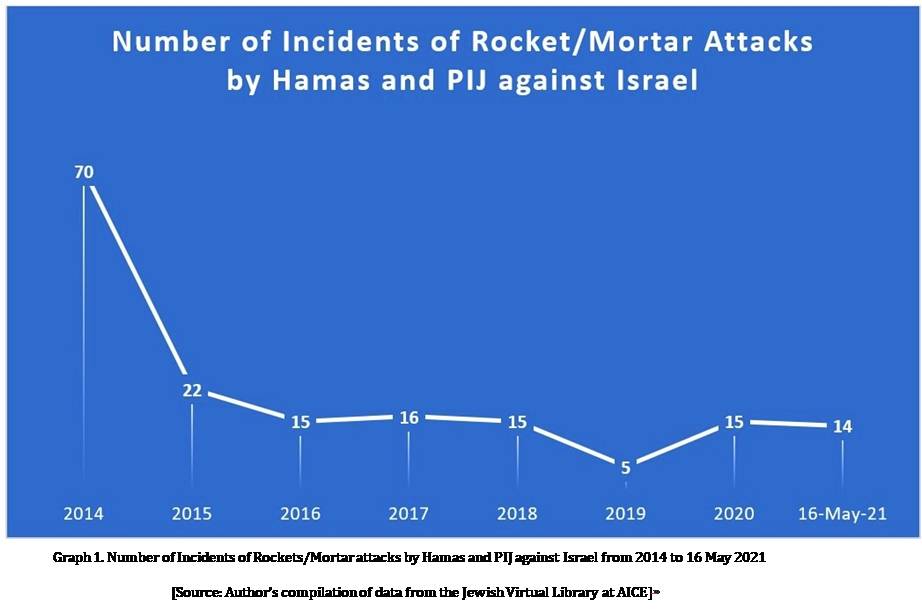
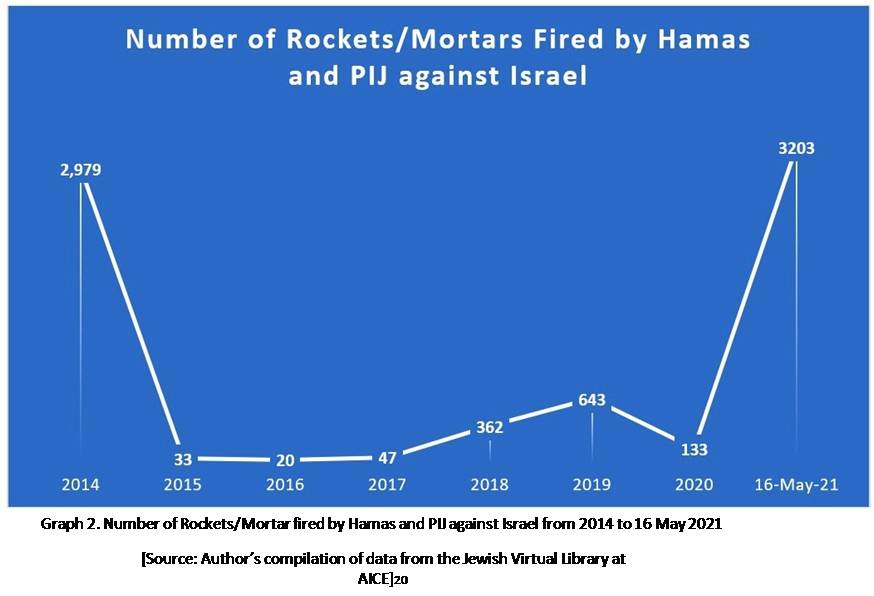
The year 2014 witnessed one of the worst phases in the tensions between Israel and Palestine. Alongside the “Gaza War” or “Operation Protective Edge”, which was carried out from 08 July to 26 August, for almost seven weeks, the year 2014 recorded 70 incidents of rocket/mortar attacks fired by Hamas and the PIJ from the Gaza Strip against Israel, as shown in Graph 1. Referring to Graph 2, the total number of rockets/mortars fired by Hamas and PIJ against Israel counted to 2,979. From 2015 to 2016, there has been a steep decline in the number of rocket attacks against Israel. The downturn in the rocket attacks was due to the wave of “lone-wolf intifada or knife intifada”, which led to the deaths of around 38 Israelis and left more than 500 injured. 21 Despite the steady counts of rocket attack incidents, in 2018 and 2019, the number of rockets fired against Israel totalled 362 and 643 respectively, with only 15 and 05 incidents recorded. The pattern highlights the intensity of Hamas and PIJ's rocket/mortar attacks from the Gaza strip.
The analysis of both graphs highlights the significant rise in the tension that led to the conflict between Israel and Hamas/PIJ. In 2020, in 15 incidents, Hamas and the PIJ fired 133 rockets; however, in 14 incidents recorded till 16 May 2021, over 3,200 rockets were fired against Israel. In the seven days (from 10-16 May), over 3,150 rockets, i.e. an average of 450 rockets/day, were fired against Israel at various Israeli locations in which 10 Israelis were killed. Around 90 per cent of Hamas’ rockets were successfully intercepted by Israel’s missile defence system—Iron Dome. In retaliation, over 820 terror targets were destroyed, and over 130 Hamas/PIJ terrorists were eliminated. 22
As for the tactics, Hamas turned residential areas in the Gaza strip into military strongholds. Hamas uses the buildings in residential areas for multiple military purposes, including gathering intelligence, conspiring and coordinating attacks, command, control and communication. Hamas also uses the United Nations (UN) facilities such as schools, children’s playgrounds, water towers, mosques and other civilian infrastructures to launch rockets and mortars. Using civilian infrastructure provides strategic advantage to Hamas, restricting the IDF response to attacks due to civilian residing in those infrastructures. Also, Hamas takes strategic advantage of the civilian casualties on the Gaza Strip to build international pressure on Israel, even though these casualties might have resulted from Hamas’ misfired rockets. On 15 May 2021, Israel provided an advance warning to civilians and time to evacuate a building containing Hamas military intelligence assets inGaza. Sometime later, the building was struck by the Israel Defence Forces (IDF) fighter jets, read the statement released by the IDF. 23
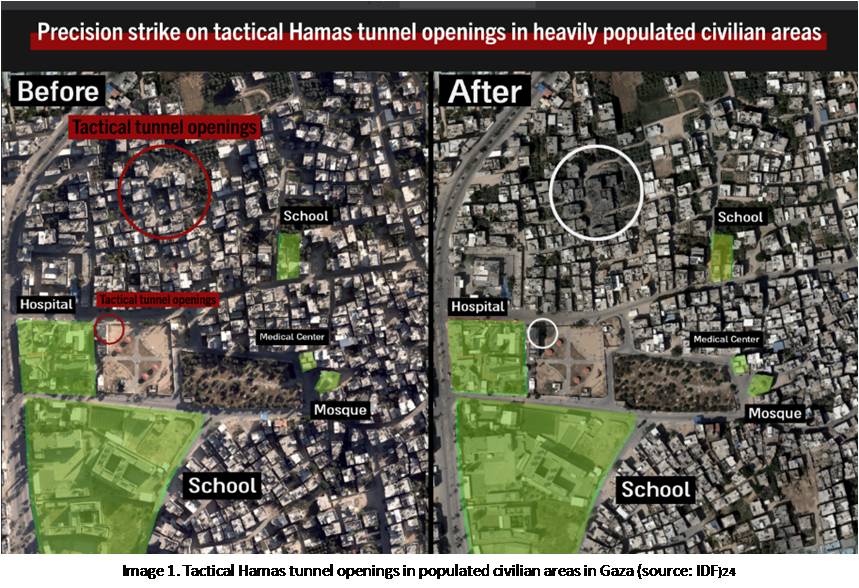
On 16 May, IDF released evidence of Hamas’ abuse of civilian infrastructures and how it has been destroyed with the precision strike by the IDF (as shown in image 1). Despite Hamas and PIJ endangering the lives of its civilians, the Israeli forces continued the strikes on Hamas targets while continuing the efforts to minimise the loss of civilian lives. Considering that the military power has its limit, Israel must develop a strategy on different dimensions against Hamas, such as countering the arms and ammunition imports to Gaza and disabling Hamas’ capabilities including building up of its future arsenal against Israel. Also, utilising media and cyber milieu, Israel must disseminate its narrative to counter Hamas’ narrative of being the defender of Al-Aqsa mosque and the future of Jerusalem.
India’s Act of Balancing Relations with Israel and Palestine Amid Concerns
India shares solid bilateral relations with both parties involved in the conflict—Israel and Palestine. Therefore, India cannot openly support the actions of either side. Although India recognised the State of Israel in 1950, the bilateral relations entered into a partnership in 1992 based on two essential pillars—defence and agriculture. The partnership turned into a robust strategic relationship between India and Israel in July 2017, when Indian Prime Minister (PM) Narendra Modi took a historic first-ever visit to Israel by an Indian PM. As a gesture, Israeli PM Benjamin Netanyahu made a return visit to India in 2018.25 The visits strengthen India-Israel’s bilateral cooperation on various issues, including water mechanisms, agriculture, counter-terrorism, and defence. In the ongoing Israel-Palestine conflict, the safety concerns related to Indians living in Israel are the primary concerns for India. As per the Indian diaspora, about 15,000 Indian citizens live in Israel (as per data available on December 2020), out of which 13,500 are caregivers employed by Israeli elders, and the rest are diamond traders, IT professionals and students. On 10 May 2021, a 30-years old Indian—Soumya Santhosh, was killed in a rocket attack fired by Hamas/PIJ from Gaza after it struck a house in Ashkelon in southern Israel. Soumya, a native of the Idukki district in Kerala, worked as a caregiver to an old Israeli woman and was doing Video Conferencing (VC) with her husband in India when a rocket struck the house. However, the 80-years old Israeli woman survived the direct hit on the house but was hospitalised with injuries. 26
India’s Permanent Representative to the United Nations (UN)—Ambassador T S Tirumurti, on 16 May 2021, addressed the UNSC (United Nations Security Council) Open VTC on ‘the situation in the Middle-East’ and said: 27
“We [India] reiterate our strong condemnation of all acts of violence, provocation, incitement, and destruction. Immediate de-escalation is the need of the hour. We [India] urge both sides to show extreme restraint, desist from actions that exacerbate tensions, and refrain from attempts to change the existing status-quo, including East Jerusalem and its neighbourhood.”
“The indiscriminate rocket firings from Gaza targeting the civilian population in Israel, which we [India] condemn, and the retaliatory strikes into Gaza, have caused immense suffering and resulted in deaths, including women and children. India has also lost one of her nationals living in Israel in this rocket fire – a caregiver in Ashkelon…….We [India] reiterate our strong condemnation of all acts of violence, provocation, incitement and destruction.”
The statements made by India’s Permanent Representative to the UN reflects India’s balanced approach considering strong bilateral relations with Israel and Palestine. Despite India’s belief in the ‘Two-State solution’ and support forestablishingthe State of Palestine, the bilateral relations between India and Israel continue to grow stronger over time. In 1974, India became the first non-Arab nation to recognise the Palestine Liberation Organisation (PLO) as the sole representative of the people of Palestine; and in 1988, India was one of the countries to recognise the State of Palestine. In February 2018, Indian PM Narendra Modi made a historic visit to Palestine, a first-visit made by any Indian PM to Palestine. On his visit, PM Modi was honoured with the highest Palestinian award of the “Grand Collar of the State of Palestine” to recognise India’s continuous support to Palestine.28 India acknowledges the Gulf nations’ support for Palestine and their objective of establishingthe State of Palestine. In the Israel-Palestine conflict, India must continue to play a realistic and balanced diplomatic role. Israel is an essential strategic partner for India’s defence equipment requirements, whereas strong relations with Iran and other Gulf countries are important for crucial energy needs.
Endnotes
- PM of Israel (@IsraeliPM). 2021. “Israeli PM’s Twitter post.” Twitter, 14 May 2021, 08:58 p.m. Available from: https://twitter.com/IsraeliPM/status/1393226710955474949 . Accessed on 14 May 2021.
- Boxerman, Aaron. “Supreme Court delays session on Sheikh Jarrah evictions amid Jerusalem violence”, The Times of Israel, 09 May 2021. Available from: https://www.timesofisrael.com/supreme-court-delays-session-on-sheikh-jarrah-evictions-amid-jerusalem-tensions. Accessed on 14 May 2021.
- Wilson, John. 1847. The Lands of the Bible Visited and Described. Vol 1. pg. 491.
- Karl, R. and Shimon Landman. “The Establishment of Muslim Neighbourhoods in Jerusalem, Outside the Old City, During the late Ottoman period”, Palestine Exploration Quarterly, Vol 112, 1980. Available from: https://www.researchgate.net/publication/275497817_The_Establishment_of_Muslim_Neighbourhoods_in_Jerusalem_Outside_the_Old_City_During_the_Late_Ottoman_Period/link/55587a8808ae6943a874faf1/download ; Shahin, Mariam. 2005. Palestine: a guide. Northampton Mass: Interlink Books. Available from: https://archive.org/details/palestine00mari/page/328/mode/2up . Accessed on 14 May 2021.
- Reiter, Yitzhak and Lior Lehrs. “The Sheikh Jarrah Affairs: The Strategic Implications of Jewish Settlement in an Arab Neighbourhood in East Jerusalem”, The Jerusalem Institute for Israel Studies, 2010, Available from: https://jerusaleminstitute.org.il/wp-content/uploads/2019/06/PUB_sheikhjarrah_eng.pdf . Accessed on 13 May 2021.
- Ostrovsky, Arsen. “Sheikh Jarrah: A Legal Background”, Jewish News Syndicate, 10 May 2021, Available from: https://www.jns.org/sheikh-jarrah-a-legal-background/ . Accessed on 13 May 2021.
- “East Jerusalem-Facts and Figures, 2021”, The Association for Civil Rights in Israel, 10 May 2021, Available from: https://www.english.acri.org.il/post/__283 . Accessed on 13 May 2021.
- MEE Staff. “Israel arrests Palestinians in Jerusalem after removal of Damascus Gate barricades”, Middle East Eye, 26 April 2021. Available from: https://www.middleeasteye.net/news/jerusalem-palestine-israel-damascus-gate-ramadan-arrests . Accessed on 14 May 2021.
- Ibid.
- TOI Staff. “East Jerusalem man nabbed for slapping Ultra-Orthodox boys on train, filming it”, The Times of Israel, 16 April 2021, Available from: https://www.timesofisrael.com/east-jerusalem-man-arrested-suspected-of-slapping-ultra-orthodox-boys-on-train/ . Accessed on 14 May 2021.
- TOI Staff. “Jewish extremists plan rally in Jerusalem’s old city amid rising tensions”, The Times of Israel, 21 April 2021. Available from: https://www.timesofisrael.com/jewish-extremists-plan-rally-in-jerusalems-old-city-amid-rising-racial-tensions/ . Accessed on 14 May 2021.
- Ibid.; MEE Staff. “Israel closes Al-Aqsa gate and restricts entry to Jerusalem after night of clashes”, Middle East Eye, 23 April 2021, Available from: https://www.middleeasteye.net/news/israel-palestine-jerusalem-aqsa-gate-closed-night-clashes . Accessed on 15 May 2021.
- Ben-Nun, Sarah. “Dozens hurt and arrested as Jewish and Arab extremists clash in Jerusalem”, The Jerusalem Post, 23 April 2021, Available from: https://www.jpost.com/breaking-news/police-gearing-up-for-far-right-protest-in-jerusalem-666057 . Accessed on 15 May 2021.
- Fabian, Emanuel. “Gaza incendiary balloons spark 6 fires in Southern Israel”, The Times of Israel, 06 May 2021. Available from: https://www.timesofisrael.com/gaza-incendiary-balloons-spark-6-fires-in-southern-israel/ . Accessed on 15 May 2021.
- “Palestinians, Israeli settlers scuffle in east Jerusalem”, Associated Press, 07 May 2021, Available from: https://apnews.com/article/jerusalem-middle-east-israel-lifestyle-religion-f4c2594aab82ca8117c39b577a42ff01 . Accessed on 16 May 2021.
- “Israel bombs 130 Gaza targets in retaliation for 200 Hamas rockets, after police clash with worshipers in Jerusalem”, Russia Today, 11 May 2021, Available from: https://www.rt.com/news/523428-israel-strikes-gaza-jerusalem/ . Accessed on 15 May 2021.
- Ibid.
- “Palestinian Islamic Jihad official Ramez al-Halabi: the rockets we use to pound Tel Aviv, our weapons, our money, and our food are provided by Iran”, MEMRI, 12 May 2021. Available from: https://www.memri.org/reports/palestinian-islamic-jihad-official-ramez-al-halabi-rockets-we-use-pound-tel-aviv-our-weapons . Accessed on 15 May 2021.; MEMRI. “The link between Iran and the missile arsenals in Gaza”, Jewish News Syndicate, 13 May 2021, Available from: https://www.jns.org/the-link-between-iran-and-the-missile-arsenals-in-gaza/ . Accessed on 17 May 2021.
- Graph 1. Source of data compiled by the author- Jewish Virtual Library at the American-Israeli Cooperative Enterprise. Available from: https://www.jewishvirtuallibrary.org/palestinian-rocket-and-mortar-attacks-against-israel. Accessed on 17 May 2021.
- Graph 2. Ibid.
- Zitun, Yoav. “IDF annual report: more rockets, less terror acts”, YNet, 01 May 2020, Available from: https://www.ynetnews.com/article/HySwzLygI . Accessed on 16 May 2021.
- Israel Defence Forces (@IDF). 2021. “IDF’s Twitter post.” Twitter, 17 May 2021, 01:11 p.m. Available from: https://twitter.com/IDF/status/1394196263512457220. Accessed on 17 May 2021.
- “IDF strikes multi-story building which contained military assets belonging to Hamas military intelligence”, Israel Defence Forces, 15 May 2021, Available from: https://www.idf.il/en/minisites/operation-guardian-of-the-walls/idf-strikes-multi-story-building-which-contained-military-assets-belonging-to-hamas-military-intelligence/ . Accessed on 15 May 2021.
- Image 2: Israel Defence Forces; Available from: https://static.spokesperson.gincher.net/storage/-dOV225blNVtjzP-So73j.pdf . Accessed on 15 May 2021.
- Government of India-Embassy of India in Israel. “India-Israel bilateral relations”, December 2020, Available from: https://www.indembassyisrael.gov.in/pages?id=mbk5e&subid=lejRe. Accessed on 17 May 2021.
- PTI. “Mortal remains of Indian woman killed in Israel rocket attack sent to India”, India Today, 15 May 2021, Available from: https://www.indiatoday.in/world/story/mortal-remains-of-indian-woman-killed-in-israel-rocket-attack-sent-to-india-1802766-2021-05-15 . Accessed on 16 May 2021.
- Tirumurti, Amb. T S. “UNSC Open VTC on ‘the situation in the Middle-East’”, Permanent Mission of India to the United Nations, 16 May 2021, Available from: https://pminewyork.gov.in/IndiaatUNSC?id=NDI0OA . Accessed on 17 May 2021.
- Government of India-Ministry of External Affairs. “India-Palestine Bilateral Relations”, September 2019, Available from: https://www.mea.gov.in/Portal/ForeignRelation/Bilateral_Brief-Sept_2019.pdf. Accessed on 17 May 2021.
(The paper is the author’s individual scholastic articulation. The author certifies that the article/paper is original in content, unpublished and it has not been submitted for publication/web upload elsewhere, and that the facts and figures quoted are duly referenced, as needed, and are believed to be correct). (The paper does not necessarily represent the organisational stance... More >>
Image Source: https://sarawakvoice.com/wp-content/uploads/2021/03/images-1.jpg

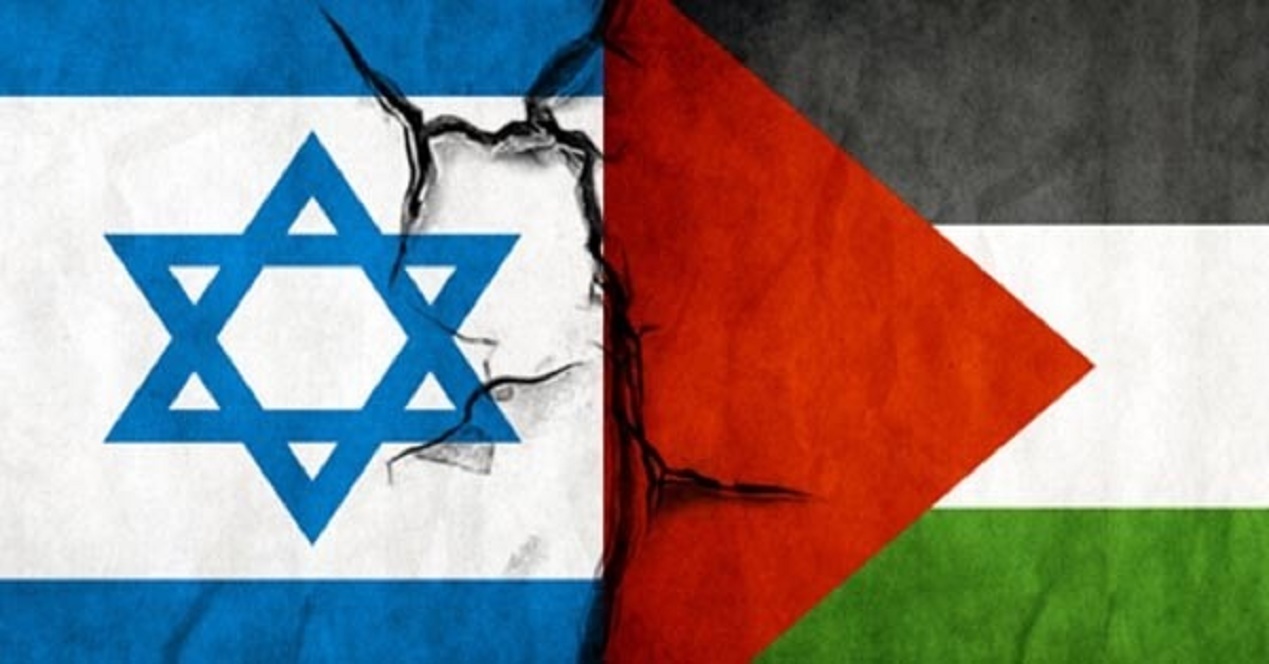

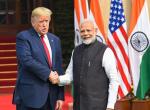
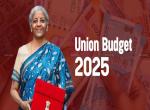
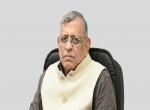
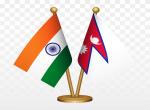

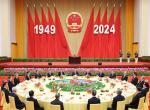
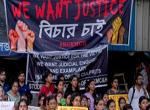

Post new comment